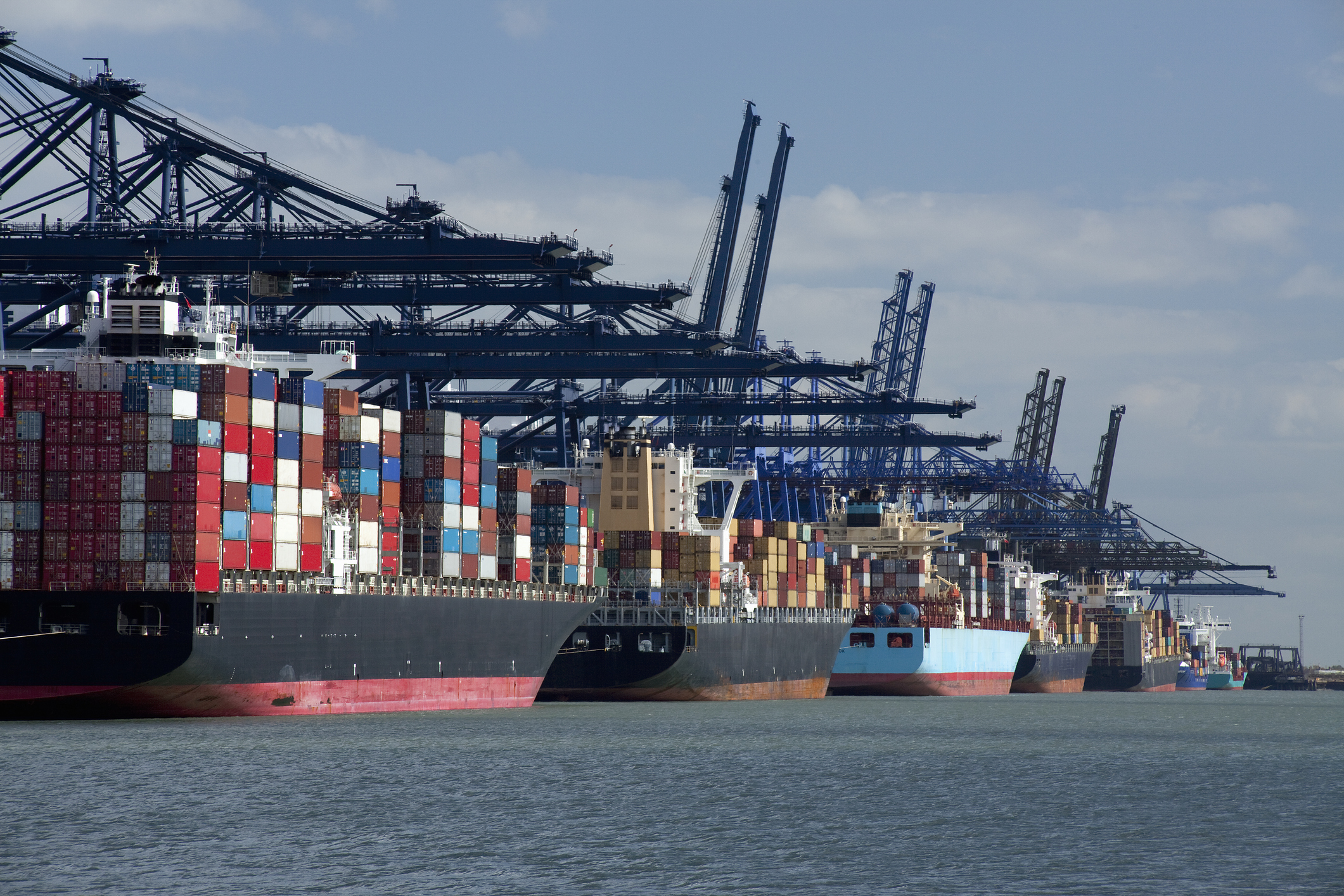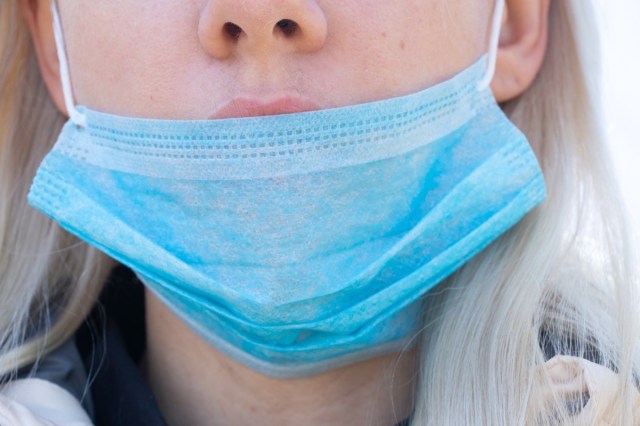The world’s largest transportation providers are suffering from a nasty case of COVID whiplash.
The Great Train Robbery

Efforts to force Americans onto trains are largely pointless and counterproductive.
We will soon be leaving the first quarter of the 21st century behind us. But in the minds of our transportation planners, the punditry, and some real estate interests, the way forward is actually to step back to the glories of the 19th century. At the state level, and most significantly in Washington, we are about to pour an unprecedented $20 billion more into transit, especially subways and other trains. This is folly: changing demographics and geography, as well as new technologies, suggest a very different future for how most of us get around. We are simply not going to become a nation of train travelers, and it would be pointless—not to say destructive—to try.
There’s nothing new here. Much of the national media, in chorus with urban political and economic leaders, have been pushing these train-focused approaches since the days of Jimmy Carter. The stated aim is usually to move Americans away from their supposedly evil and pernicious love of the private automobile. Americans drive not because they irrationally love cars—although some do—but because it is simply by far the best way to get around.
We know this because for the most part, train-heavy investments have reaped little in terms of riders and virtually no reduction in auto usage. Indeed, even before the pandemic, transit ridership, despite the creation of new lines, was sagging. Since then transit has continued and accelerated its decline. By the end of 2022, the transit market share had fallen 50%. Today, despite the end of the pandemic, that number has barely moved at all. It is into this fading market share that the current administration and much of the political class now wants to throw its money. This even includes a $6.7 billion one-mile extension of the Caltrain commuter rail service to San Francisco’s moribund downtown, which has been characterized as “among the world’s most expensive projects.”
Transit’s Problem with Demographic Patterns
Transit’s biggest problem, even since before the pandemic, has to do with profound shifts in demographics and geography. Despite all the hype about going “back to the city” over the past few decades, the country has continued to disperse to suburban areas which largely rely on auto travel. It was hoped that drivers in newer, faster-growing metropolitan areas—Atlanta, Dallas-Fort Worth, Houston, Phoenix—would commute on new, expensive urban rail systems. This has not come to pass. Transit advocates tend to stress, correctly, the damage done to families and individuals from long road commutes. But in reality, it is transit riders who consistently suffer the longest commutes.
Nowhere has the transit fantasy been more aggressively sold than in Southern California. For years urbanistas on the east coast have fantasized about Los Angeles becoming the “the next great transit city.” Yet even before COVID, the region’s $20-billion investment in new trains has resulted not in increased transit market share but a smaller one. Today’s ultra-expensive transit lines, it turns out, carry a smaller percentage of daily riders than the old, much-maligned bus system carried back in the 1980s.
The key problem in Los Angeles and much of the country lies in changing residential patterns and business locations. Transit works best in highly concentrated downtown districts, which receive workers from surrounding communities. This model still works, albeit less well, in our older, more traditional cities. Indeed, more than a third of all transit commuting destinations are in the city (not metro) of New York. Beyond that, another quarter of transit destinations are in just six cities: those with the largest central business districts outside New York (called legacy cities), including Chicago, Philadelphia, San Francisco, Boston, and Washington.
Starting in the 1920s, and certainly after 1950, population trends have been shifting toward the periphery. In 1950, the core cities accounted for nearly 24% of the U.S. population; today the share is under 15%. In contrast, the suburbs and exurbs grew from housing 13% of the metropolitan population in 1940 to 86% in 2017, a gradual increase of 2% a year. Suburbs account for about 90% of all U.S. metropolitan growth since 2010. Between 2010 and 2020, the suburbs and exurbs of the major metropolitan areas gained 2 million net domestic migrants, while the urban core counties lost 2.7 million.
The Economic Imperative
Despite the revival of some urban cores earlier in this century, the relentless dispersion of jobs also continues apace. Bumsoo Lee and Peter Gordon at the University of Southern California found that by 2000, 80% of employment in 79 major metropolitan regions was held by residents of areas outside both downtowns and peripheral urban areas. In 2000, more than 90% of major metro employment was in the suburbs and exurbs. Migration patterns suggest this trend will continue as two-thirds of Millennials before the pandemic preferred suburban locations. To be sure, young and talented people will continue to flock to some of the biggest central cities. But once they hit the family formation period in their 30s, they still largely depart for the suburbs.
Critically, the tech industry is clustered mostly in the suburbs, whether in coastal California or Seattle, Raleigh-Durham, or Boston. Tech, notes Stanford University’s Margaret Pugh O’Mara, created a new reality, pushing closer to “classic definitions of cities in terms of their economic diversity and self-sufficiency.” These communities may be defined by strip malls, housing tracts, and automobile access, but they are no longer “amorphous extensions of the core.” Rather, they were “cities of knowledge.” Even key sectors, like finance and business services, have shifted increasingly to highly suburbanized metros like Raleigh, Salt Lake City, Austin, and Phoenix, where costs and taxes are lower, as is transit ridership.
The Pandemic Effect
The pandemic exposed the reliance of transit-oriented downtowns on high-end business services. Even San Francisco, long home to one of the nation’s strongest central business districts, has suffered rising office vacancies up to three times pre-pandemic levels. That’s enough to fill the Salesforce Tower, the city’s tallest building, 17 times. Most companies there, according to a Bay Area Council survey, expect employees to come to the office three days a week or less, with barely one in five seeing a return to “normal.”
Three years after the pandemic, we see declining core populations, with all growth now occurring in the suburbs. Only four of the nation’s 62 leading downtowns, notes a recent U.C. Berkeley study, have recovered from the pandemic. And the transit-dependent ones are in the worst shape. Partnership for New York, upon surveying employers, revealed that roughly three in four expect to allow either a hybrid model that requires two to three days at the office, or no office days at all.
Even before COVID, working at home had raced ahead of transit as a commute option in the United States. In 2018, working at home led transit in 44 of the 53 metropolitan areas with a population greater than one million. The dream of America becoming a nation of “strap hangers” was already painfully remote, and is now at the level of fantastical.
Studies from the National Bureau of Economic Research and the University of Chicago suggest that remote work could become the norm for one-third of the workforce, and as high as 50% in Silicon Valley. Some three-quarters of venture capitalists and tech firm founders, notes one recent survey, expect their ventures to operate totally, or mostly, online. Much of this movement was to exurbs, often an hour or more away from the traditional tech hubs.
Of course, the weakening of the pandemic will occasion some return to the office. But Stanford economist Nicholas Bloom suggests that remote workers in the future will constitute at least 20% of the workforce, more than three times the pre-pandemic rate. The work-at-home shift addresses issues especially important to Millennials, according to a Conference Board survey, like enhanced “life-work balance.” Whether by car, train, or bus, long-distance commutes are particularly unpopular with workers with children, who favor continuing to work mostly or entirely at home
The Electric Car Obsession
In some ways the almost maniacal embrace of electric vehicles suggests that perhaps even in the greenest places like California, the transit fantasy has to make room for a vision of “clean” electric vehicles. Yet in reality, the dream of clean cars faces enormous challenges, ranging from expenses and dependence on rare metals coming from unsavory sources to a looming shortage of electric power, particularly in states.
Even as they aim to shut down the last nuclear plant and its existing gas infrastructure by 2050, state consultants estimate that electrification mandates, including those for trucks, will cause total demand to skyrocket. Some estimates show demand rising 60 to 90% by that time. Almost comically, California—which announced it would ban the sale of new gas-powered cars by 2035—was forced to beg residents this summer to stop charging their electric cars for fear of breaking the power grid amid a massive heatwave. In the U.K., EVs are projected to double the demand for electricity by 2040, and the government is already looking to ban the use of home chargers during peak hours.
The imposition of electric cars will have other nasty economic consequences. Simply put, EVs—which last year sold for an average of at least $56,000—are not a viable option for most Californians, particularly as demand has inflated the price for lithium, copper, and aluminum. Middle-class Americans certainly won’t be snatching up the newly planned $300,000 Cadillac EV. When Governor Newsom announced an accelerated schedule to ban gasoline car sales by 2035, Assemblyman Jim Cooper, an African American from Sacramento, denounced the proposal. The low- and middle-income drivers he represents can’t afford electric cars. “How will my constituents afford an EV? They can’t,” he tweeted.
The forced march to electric vehicles may help underperforming firms like General Motors use federal mandates to boost market share, but the overall auto job count is certain to decline. Overall, electric cars use 30% less domestic labor in the U.S., and in Germany some 75,000 jobs are expected to disappear by 2030 if we continue on this track.
The ultimate beneficiary of electric car mandates is likely to be China. In countries like Germany, as well as the U.S. and Canada, auto manufacturing is serviced by an elaborate network of suppliers. Beijing’s battery capacity is now roughly four times ours, and China exercises effective control of the requisite rare earth minerals and the technology for processing them. Indeed, given its growing dominance in computer production and its drive to control semiconductors as well, China may be able to use the EV surge to replace much of the Western auto industry. All this is no big win for the environment, as these components are being made in an economy powered largely by coal and dependent on mines in places like Africa, where environmental concerns are often secondary. China may win the green car race, but it will do so while spewing out more greenhouse gases than the entire developed world combined.
Transportation Pluralism
The solution to the current, and growing, misallocation of transportation assets lies in a pluralistic approach. Public transit does work, and seems totally necessary, in a handful of places—notably in the legacy cities whose roots lay in the pre-auto era. These areas should be able to use their federal transportation dollars as they see fit. If New York wants to take its share of federal money for trains and buses, that should be perfectly fine. Similarly, sprawling post-1950 cities and suburbs should be able to invest in roads and ways to replace underutilized transit.
And to be sure, EVs should play a growing role in our transportation system. But as car experts at Toyota and elsewhere have argued, there are numerous other, more affordable, and quicker ways to reduce emissions, including affordable low-emissions gas cars and Prius-like hybrids. Keeping cars affordable is critical given that most Americans rely on them, and there are virtually no metropolitan areas where transit can provide competitive mobility. It is also deeply tied to individual mobility and autonomy, something widely despised in planning circles. The Davos crowd, true to form, has proposed eliminating “ownership” altogether.
We are at the edge of new technological breakthroughs that can produce a wide range of options and can successfully reduce energy use while expanding the range of choices for both individuals and city governments. Rather than impose expensive and often ill-conceived solutions for getting around, we can create a new transportation system that allows for maximum choice and comfort. Perhaps that won’t please the planning establishment. But for most everyone else, it would likely be a welcome change.
The American Mind presents a range of perspectives. Views are writers’ own and do not necessarily represent those of The Claremont Institute.
The American Mind is a publication of the Claremont Institute, a non-profit 501(c)(3) organization, dedicated to restoring the principles of the American Founding to their rightful, preeminent authority in our national life. Interested in supporting our work? Gifts to the Claremont Institute are tax-deductible.
Nationalist localism—unlike globalism—survives the virus.
And how to unlock ourselves.
On Trump and the virus.
Inside America’s mortality misinformation crisis.






